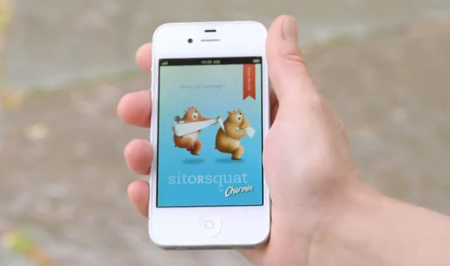 The intersection between digital, social and physical experiences.
The intersection between digital, social and physical experiences.
Like most of us today, time is precious. As I was running around shopping this past Christmas season I used all available digital tools to make it faster, easier and more enjoyable. Well I tried to make it more enjoyable!
Like many of you, I research products online, create a list and map out my shopping route before heading out the door. Also, more and more often, I find myself downloading mobile apps to support my pending shopping journey. Home Depot, RedLaser and ShopSavvy are currently three of my favorites. I have even started to avoid some retailers that do not provide digital tools to support my shopping journey.
This got me to thinking about the importance for marketers in 2013 to shift resources from creating ads and materials to designing value-added digital services for consumers.
Utility Marketing
The concept of utility marketing has been one of the fastest growing areas in marketing in the past few years. A couple of years ago I had the pleasure of participating in a panel discussion at the SES conference. The panel topic was The Future of Digital Marketing. Each of us on the panel provided our point of view on where we saw digital marketing going.
I saw (and still see) the future of marketing focused on creating value-added services that are designed to support the entire customer experience. At the time, I used the term Marketing as a Service to describe this concept.
Marketing departments need to become more focused on creating value-added services, not just one-off campaigns. Services that support the brand provide value beyond its product offering and become part of a customer’s everyday life. A great example of this is the SitOrSquat app by P&G, which assists you in locating a clean public washroom, or the CoverMe Packing App by Manulife that helps you pack and track your vacations or business trips.
Before mobile it was harder to create marketing utilities and services that would weave in and out of a customer’s everyday life. Today we know that consumers are using mobile devices throughout the purchase journey – pre, during and post. According to AskingCanadians, 46 per cent of consumers use their mobile devices to research products as part of their shopping journey. And fully 25 per cent of Canadians agree with the statement, “I am likely to shop via my mobile device, provided the process is easy.” We are also seeing interest in shopping centre apps with 7 per cent reporting that they have used one in the past three months. Mobile has opened up this new world of marketing as a service.
Designing a great branded utility that will become part of your customers’ everyday life is not easy. Like any great service you need to keep the customer in mind first, execute flawlessly and continually update and improve based on customer feedback. Most importantly, you need to design a utility that embodies your brand and core values.
The Power and Potential
We all know that the potential of a branded utility lives within the permission-based customer data the brand can collect – location, social, transactional, real-time customer feedback, etc. This data can be used to send permission-based, targeted offers to customers at the right time and place. Not to mention, what brand wouldn’t want their customers or potential customers to have a positive brand experience with a utility or value-add service they provide? That’s brand gold.
[Photo: iMedia Connection]
Good post Steve, an interesting area that the marketing as a service concept may hold significant opportunity is in the B2B space, specifically finance and investments, where the products/services have become somewhat commoditized. u00a0
Thanks Jeff.u00a0 Interesting you bring up thenB2B space.u00a0 I could not agree with you more.u00a0 Last year we saw annincrease in organizations asking us to investigate how digital services andntools could be applied to B2B.u00a0 You are on the right track.